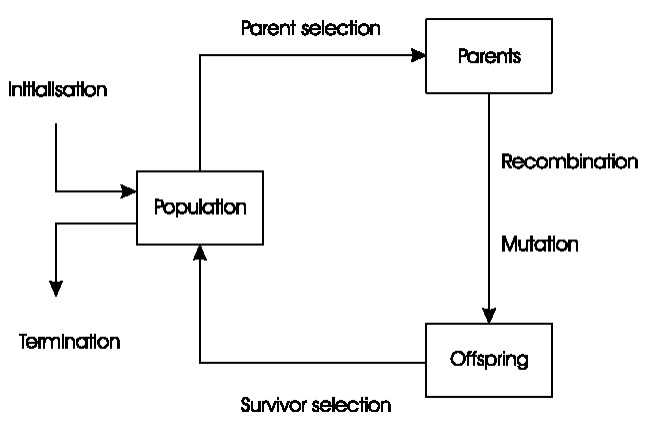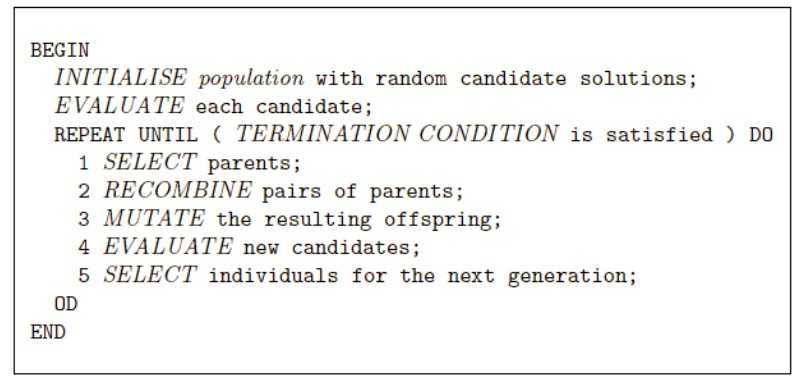标签:
Resource:《Introduction to Evolutionary Computing》
There are many different variants of evolutionary algorithms. The common underlying behind all these techniques is the same: given a population of individuals within some environment that has limited resources, competition for those resources causes natural selection (survival of the fittest)
The general scheme of an evolutionary algorithm as a flowchart:

The general scheme of an evolutionary algorithm in pseudocode:

This is commonly referred as a means of generating new candidate solutions.
This has:
An introductory example: f(x) = x^2
generational model: In each generation we begin with a population of size μ, from which a mating pool of μ parents is selected. Next, λ (=μ) offspring are created from the mating pool by the application of variantion operators, and evaluated. After each generation, the whole population is replaced by its offspring, which is called the "next generation".
steady state model: The entire population is not changed at once, but rather a part of it. In this case, λ (<μ) old individuals are replaced by λ new ones, the offspring. The percentage of the population that is replaced is called the generational gap, and is equal to λ/μ. Usually, λ = 1 and a corresponding generation gap of 1/μ.
The survivor selection mechanism is responsible for managing the process whereby the working memory of the GA is reduced from a set of μ parents and λ offspring to produce the set of μ individuals for the next generation.
This step in the main evolutionary cycle is also called replacement.
age-based replacement
fitness-based replacement
4. Review ——Evolutionary Computing
标签:
原文地址:http://www.cnblogs.com/adelaide/p/5693613.html